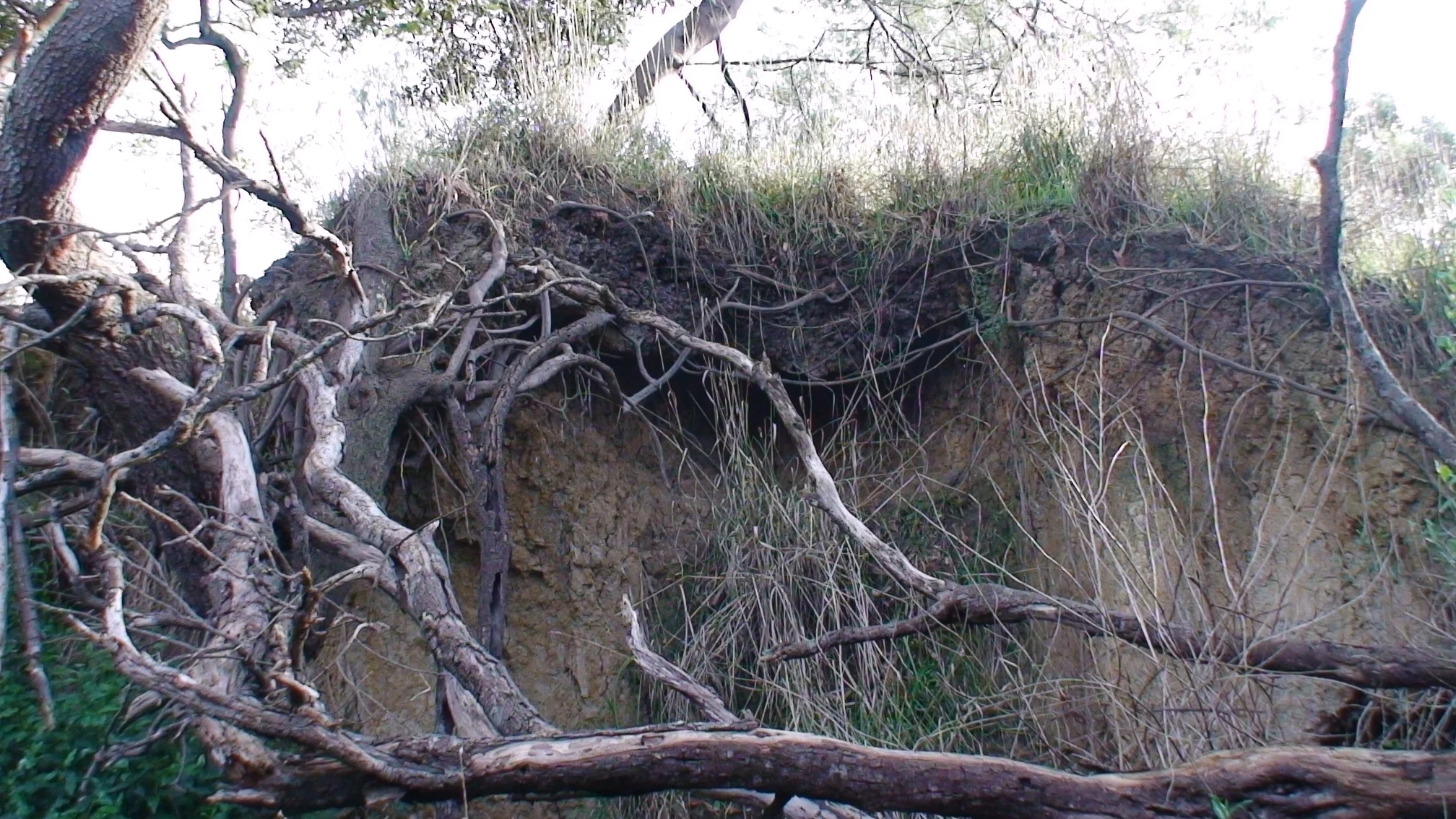This photo diary records the ecological rehabilitation of the Deans Marsh Creek within Frogwood over the years 2008 - 2017.
2017
2016
2015
2014
It is common to think of erosion most occurring where water comes in contact with the bank of a creek. However as these two photos show erosion can also occur where the creek has cut through the water table in the adjacent land. Cutting through the water table allows the water to escape and in the process “eating out” the soil below the surface which is still held together by the roots of plants. This form of erosion can also be called subsurface erosion. Where subsurface erosion is concentrated it can lead to tunnel erosion.
2013
Albino Black wattle?
Prickly moses
Prickly tea tree
Two following two photos show how the “corse” roots of some trees, in this case Blackwoods, can contribute to bank destabilisation. This happens when the tree roots encourage water turbulence leading to erosion and an unstable profile once the tree does give way. Also note the clumps of the weed grass Phalaris at the top of the second photo. The large root ball of the Phalaris does not permit the bank to smoothly adjust to a more natural angle.
2012
While weeds particularly Blackberry will always be a problem it is not longer a major problem. With the increased growth of native plants there are less spaces for the weed seeds to germinate. Currently it takes about one day with a backpack to control the Blackberries and thistles along nearly 1km of waterway.
2011
November
There has already been significant natural regeneration of pioneer species such as Blackwood's, Native Hemp and Kangaroo Apple. Also there has been a lot of natural regeneration by most of the water species planted. There is so many new plants I think some must be coming in from off-site, either arriving with the water from up creek or with visiting birds.
April
A very good wet past 12 months meant that the creek didn’t stop flowing over 2010/11 summer which I get the impression is very unusual. The wet weather combined with the hot weather has made for excellent growing conditions both in the creek proper and on the verges of the creek.
We have some very interesting "Before" and "After" photos to share from 2009 and 2011 -
"Before" 2009 - note central tree
"Before" 2009 - note large Blackwood at centre
"Before" 2009 - note leaning Blackwood at left
"After" 2011 - same position of tree
"After" 2011 - same Blackwood at centre
"After" 2011 - Same Blackwood at left
2010
December
A really good wet year (finally) has given the plants a real boost.
August
CCMA helpfully funded the replacement of the lost plants and so a second major planting occurred this year also. As well as replacing some of the missing plants a focus was made to plant water plants in the Low Flow channel.
The main weeds appearing in the creek are Blackberry, Willow and Cape Broom as well as perennial weeds such as Hemlock, Deadly Nightshade and Scotch Thistle while the exotic grass species such as Phalaris are always a problem.
A new bridge has been constructed this year to allow access o the other side of the creek.
2009
December
Another very dry year however there were a lot more pools with water that looked a lot cleaner over summer, presumably as result of the Willows being removed. Research I have read show Willows use vast amounts of water far more than that which is lost to evaporation if there is no tree cover and or native vegetation.
November
Revisiting the location of the August planting it appears about 40% of plants had been damaged due to browsing by rabbits and wallabies
August
The creek zone was replanted with 5,100 indigenous species, put into carefully selected areas specific to each species growth habits and requirements. On advice the plants were put in without guards.
Keeping up the supply of plants is hard work!
The planting team lead by Chris (far left)
Marking each plant with a bamboo stake.
March
Follow up weed spraying in the creek.
January
Willows were cut down and the stumps poisoned. The remains of the trees were stacked together in a number of piles ready for burning when the fire restrictions come off. Over 200 Willows were removed by contractors funded by the CCMA.
Willow removal
2008
October
Cool burn, which got quite hot! was run tough the creek to remove the jungle of dead Blackberry canes.
After the fire
Burning the Blackberries
After the fire
Burning the Blackberries, note how flames are going up into the trees
The owner James checking the progress.
February
Spraying of the Blackberries in the creek.
The Blackberries were sprayed with a systemic herbicide.
Pre-2008
Untouched condition of the creek.
Original state of the creek when purchased.
Covered in Blackberries and Willows







































